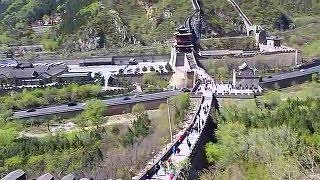
|
With Little Chinese Everywhere ...
NanXun Water Town Travel Guide
Introduction
Nanxun Water Town, located in Huzhou, Zhejiang Province, is one of the lesser-commercialized and best-preserved ancient water towns in China. Known for its elegant combination of traditional Chinese architecture and Western-style mansions, it offers a peaceful and authentic experience of Jiangnan’s waterways and history.
How to Get There
From Shanghai: Take a high-speed train to Huzhou (about 1 hour) and then a bus or taxi to Nanxun (around 30 minutes).
From Hangzhou: A high-speed train to Huzhou takes about 30 minutes, followed by a local bus or taxi.
From Suzhou: A direct bus from Suzhou South Bus Station takes about 1.5 hours.
Main Attractions
Xiaolian Zhuang (Little Lotus Garden)
Originally the private garden of a wealthy merchant, this classical Chinese garden features a picturesque lotus pond, elegant pavilions, and stone bridges.
Liu’s Family Compound
A grand residence built by one of Nanxun’s richest families, showcasing a mix of European and traditional Chinese architectural styles.
Baijian Lou (Hundred Houses Complex)
A historic residential area with well-preserved white-walled houses lined along the canals, offering a glimpse into the lives of Nanxun’s past inhabitants.
Jiaye Library
One of China’s largest and most well-preserved private libraries, built in the late Qing Dynasty. The collection includes thousands of rare books and manuscripts.
Ancient Stone Arch Bridges
Several beautiful stone bridges span Nanxun’s canals, providing scenic spots for photography and quiet reflection.
Things to Do
Boat Tour: Take a wooden boat ride through the winding canals to enjoy the tranquil waterside scenery.
Local Food: Try Nanxun’s specialties such as rice cakes, braised pork, and freshwater fish.
Handicrafts: Visit local workshops to see traditional silk weaving and paper cutting.
Photography: Capture the unique blend of old architecture and serene waterways.
Best Time to Visit
Spring (March-May) and autumn (September-November) offer the most pleasant weather, with blooming flowers and colorful foliage enhancing the town’s beauty.
Practical Tips
Wear comfortable shoes, as you will be walking along stone pathways and bridges.
Early mornings and late afternoons are the best times to explore with fewer tourists and soft lighting.
Cash is useful for small shops and local eateries, though some accept mobile payments.
Conclusion
Nanxun Water Town is a hidden gem offering a peaceful, culturally rich experience. Whether you’re interested in history, architecture, or simply enjoying a scenic getaway, Nanxun is a fantastic destination that retains its authentic charm.
|

 Exploring the beautiful HuangShan 黄山 mountain; part 1 (4/8)
Exploring the beautiful HuangShan 黄山 mountain; part 1 (4/8)




